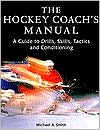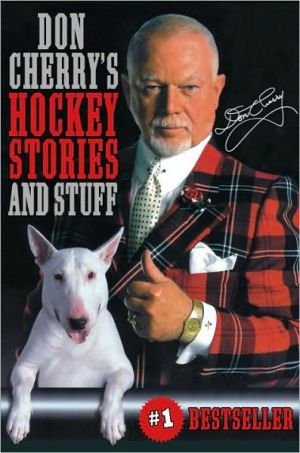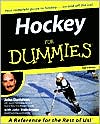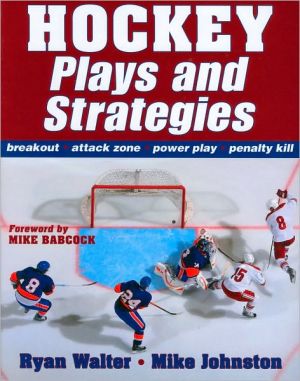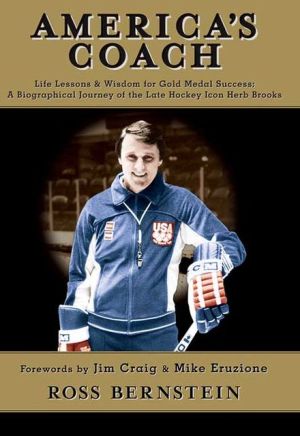Hockey Coach's Manual; A Guide to Drills, Skills and Conditioning
"Hockey is a game that demands good sound skills as the foundation for both individual players and the team, " writes Mike Smith. And team success, he adds, is simply a reflection of coaching success.\ In The Hockey Coach's Manual: A Guide to Drills, Skills, Tactics and Conditioning, Smith presents a winning formula for the hockey season.\ Complete with over 125 step-by-step diagrams, this book helps coaches set up a season-long program and walks them through a host of dryland and on-ice...
Search in google:
The HOCKEY COACHES MANUAL presents a winning formula for the hockey season. Complete with step-by-step diagrams, it helps coaches set up a season-long program of training.
\ General Introduction\ North American Hockey has historically been a game learned on natural ice. Pickup games played on a frozen pond or river or on a family backyard rink attracted players of all ages who honed their skills during endless winter days.\ The pond system provided something besides basic hockey skills, however. It bred a toughness into players that has characterized the Canadian game. Younger players who were banged around, knocked down, or checked into the snowbank by more experienced players quickly learned not to show hurt or humiliation. Though often at a disadvantage in size, skill or ability, these younger players chose instead to get back into the play, driven by a competitive urge to win against their older rivals.\ Today, organized hockey has largely taken the place of yesterday's improvised backyard games. Most of what young players once learned on the pond is taught within the more structured program of a community club. Guiding that transition from friendly to formal competition is the coach, who must provide leadership and instruction for the team.\ To fulfill his role as a teacher, today's coach must apply new, improved methods of training to develop his team's skills and elevate its level of play. Players arrive at their first practice as unrelated individuals of differing athletic abilities and skill levels. It is the coach's job to transform these players into a team. Matching a tactical strategy to suit the team's strengths (or weaknesses) calls for the coach to lay out a season-long training schedule timed to bring his players to their optimal level of conditioning and skill within the playing season.\ Hockey is not a complex game. Yet it is only through careful planning and organization that the coach can distill the game's principles into a simple and understandable method. This book provides such an introduction to several of the important elements of coaching. It will help the coach build a team by utilizing both dryland and on-ice training, designed to develop athletic abilities and fundamental hockey skills.\ Individual chapters on defensive and offensive strategies, which span the range from conservative to aggressive styles of play, will help the beginning coach make a tactical plan to suit his team. This book provides a blueprint methodology for many of the elements of coaching. Coaches should use it but not be limited by it. I encourage each coach to creatively augment this formula with his own drills, plays, systems and tactics.\ A team sport, hockey is often referred to as a feeder game, similar to basketball, lacrosse and soccer. Outstanding individual skills are important, but it is the display of teamwork during the execution of hockey tactics that allows winning clubs to excel. Hockey is an intense, physical game of skill, in which success is tied to a sound underlying framework. In this sense, it resembles jazz. Both jazz and hockey demand basic skills. Each also demands improvisation from individual players who can contribute something extra. Individuals play off each other and constantly adjust to one another. In hockey, just as in jazz, too much planning can ruin everything. Similarly, team success depends on coaching leadership that fosters athletic discipline and shapes winning team strategies without inhibiting the spirit of competition and the freewheeling enthusiasm that has characterized generations of backyard games.
General IntroductionChapter One: Skills, Tactics & ConditioningIntroduction Skills Skill Drills Individual Tactics Tactical Drills Team Tactics Conditioning Chapter Two: Skill DevelopmentIntroduction Balance Agility Coordination Speed of Movement Speed of Reaction Power Skating Puckhandling Shooting Bodychecking Goaltending Chapter Three: Defensive StrategiesIntroduction Conservative Positional With Element of Aggressiveness Aggressive Chapter Four: Offensive StrategiesIntroduction Positional Play Puck-Control Play Aggressive PlayChapter Five: Tactical Dryland PracticeChapter Six: Planning & Organization for the SeasonIntroduction The Plan Tactics Example Practice 1 Example Practice 2 Example Practice 3 Example Practice 4 Example Practice 5 Example Practice 6
